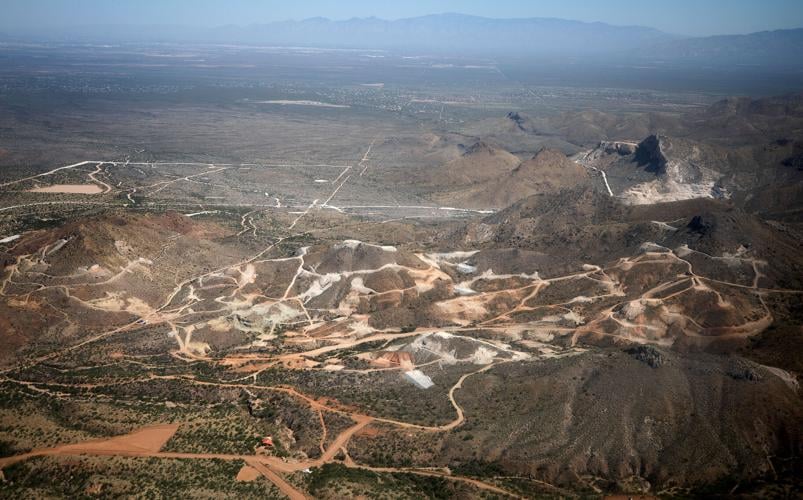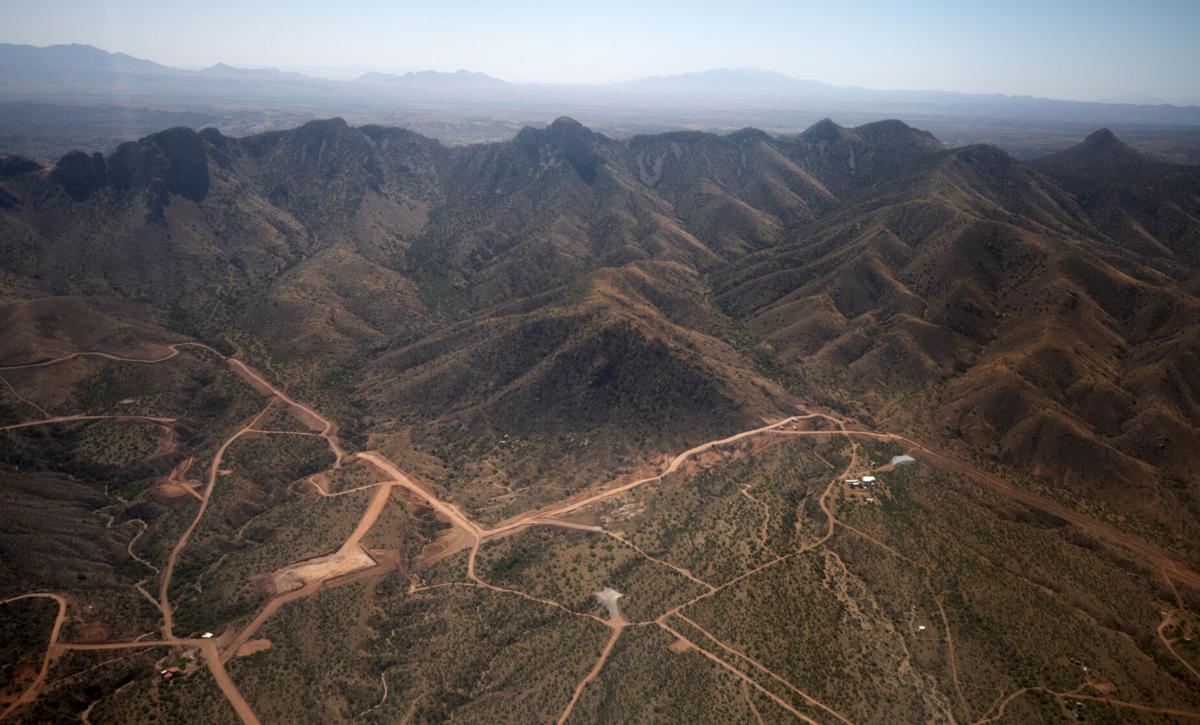In a victory for future mining in the Santa Rita Mountains, an Appeals Court panel tossed out a federal agency decision protecting hundreds of thousands of acres of land in the range south of Tucson and a lower court ruling upholding much of the agency’s action.
The ruling Tuesday, if not successfully appealed to the U.S. Supreme Court or responded to adequately by future agency actions, will essentially eliminate the jaguar as a factor in making decisions about copper mining in the Santa Ritas. An adult male jaguar, nicknamed El Jefe, was repeatedly photographed by remote cameras in this area from 2012 to 2015 before disappearing from public view.
Much of the new 9th Circuit Court of Appeals ruling was based on its finding that the U.S. government must rely on whether a jaguar was known to roam that area when the animal was first listed as an endangered species by the wildlife service. That happened in 1972, at a time when no jaguars had been seen in this country for years.

Aerial view of the proposed Rosemont Mine/Copper World site planned by Hudbay Minerals Inc. in the Santa Rita Mountains, southeast of Tucson, on May 11. The flight was coordinated by the Center for Biological Diversity and carried out by EcoFlight. Hudbay is doing grading and land clearing on private lands it owns there and eventually plans four open pits. The site also includes roads that existed before Hudbay's work began.
That meant the 2012 discovery of El Jefe, in videos and photos taken by and for environmentalists, couldn’t be considered in deciding whether that land qualified as critical habitat, the 9th Circuit found.
The ruling pulls the former Rosemont Mine site — now known as Copper World — from federally designated prime habitat for the endangered jaguar. It also voids more than half of all the 700,000 acres of federally protected critical habitat for the large mammal — 362,000 acres total — in Arizona and the U.S. as a whole, since this is the only state with critical jaguar habitat. Some critical habitat for the jaguar formerly existed in southwest New Mexico, but the 10th Circuit Court of Appeals voided that designation in 2020.

A jaguar dubbed El Jefe shown in June 2015 in the Santa Rita Mountains.
“It leaves the area vulnerable to the Rosemont Mine, or other developments,” said Michael Robinson, a conservation advocate for the Tucson-based Center for Biological Diversity, whose lawsuit against the federal government led to Tuesday’s ruling. The center has pressed for years to have that area in and around the mine site designated as critical jaguar habitat. “The Rosemont Mine is a big one, an identifiable, huge threat. But any other threats that come along, the habitat would no longer have protection.”
Hudbay Minerals Inc., which wants to build the copper mine, said in a statement that it’s “pleased that the court recognized that the U.S. Fish & Wildlife Service (FWS) erred in its designation of the northern Santa Ritas as jaguar critical habitat by not following the requirements of the Endangered Species Act and its own regulations.
“The lands in question are not, in any normal sense of the word, ‘essential’ to the survival of the jaguar species. The critical habitat designated in the United States accounts for 0.04% of all jaguar habitat and the species is not considered endangered on a worldwide basis,” Hudbay said.
Robinson said he hopes the Santa Ritas’ land could ultimately be protected as critical habitat if the wildlife service revises its original determination to take into account the 9th Circuit’s ruling.
“This was a procedural mistake or legal infirmity on the part of the Fish and Wildlife Service,” Robinson said. “It does not mean that these areas are not critically important for jaguars. They are. The Fish and Wildlife Service can go ahead, cross its t’s, dot its i’s and redo it,” he said of the original habitat designation.
The wildlife service did not immediately respond Wednesday to requests for comment on the court’s ruling or Robinson’s hope that it could revise its decision to make it more legally acceptable.
The decision comes at a time the original Rosemont Mine proposal to build an open pit copper mine on the mountains’ east slope is now essentially defunct, due to other, unrelated court rulings by a federal judge in Tucson and another 9th Circuit panel. Those rulings blocked construction of Rosemont on the grounds the U.S. Forest Service had erroneously approved the mining project without properly determining if Hudbay’s mining claims on federal land were valid.
Since those rulings occurred in 2019 and 2022, Hudbay has put its emphasis instead on developing private land it owns on the Santa Ritas’ west slope and calls the new project Copper World. Although that project would ultimately include the original Rosemont Mine site, it will cover much more ground and be mined much longer — 44 years compared to 19 for the original Rosemont site. In addition, most of its early mining will be in the west slope area.
In its statement, Hudbay said, “While the critical habitat designation has no impact on Phase I of the Copper World project, which will be on our private land, the decision will require the FWS to exercise more restraint in designating critical habitat in the future, as intended by Congress. It will also be helpful to Copper World in future consultations with the FWS, if required.”
In the new jaguar case, by a 2-1 margin, the 9th Circuit panel concluded the wildlife service had erred in designating more than 350,000 acres of national forest, state and private land as jaguar critical habitat. It also concluded that U.S. District Judge James Soto in Tucson had mistakenly upheld much of the wildlife service’s original decision protecting that habitat.
The panel found that Soto erroneously maintained this land qualified as unoccupied jaguar habitat, even while he overturned a wildlife service determination that the vast majority of that land qualified as jaguar-occupied critical habitat.
A male jaguar not previously detected by researchers was videotaped just three miles south of the recently constructed border wall between Mexico and the United States.
The jaguar appeared for the first time on camera traps along the riparian corridor of Cajon Bonito in Sonora, Mexico. The lands where the jaguar was recorded have been managed by the Cuenca Los Ojos foundation to preserve and restore biodiversity during the last three decades. Researchers have dubbed the jaguar El Bonito.
Credit: Ganesh Marin, the project leader, is a Ph.D. student in the School of Natural Resources and the Environment at the University of Arizona and a National Geographic Early Career Explorer. The research project is a joint effort of the University of Arizona and the University of Wyoming in collaboration with the Cuenca Los Ojos Foundation and members from Santa Lucia Conservancy, National Autonomous University of Mexico (UNAM), Phoenix Zoo and Arizona State University.







